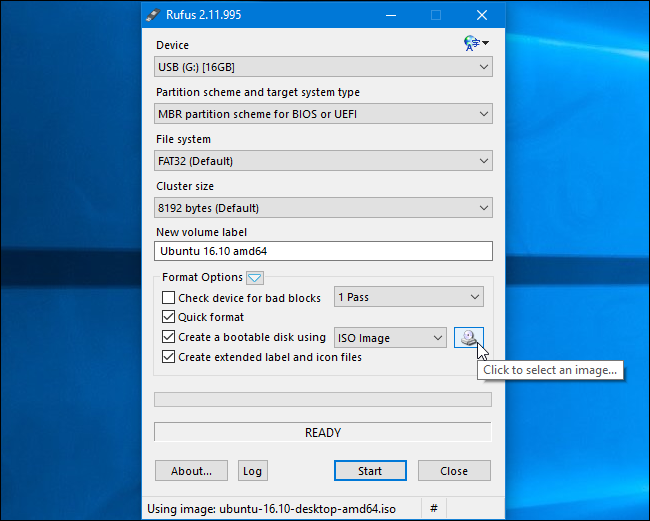
- #How to write ubuntu iso to usb mac how to
- #How to write ubuntu iso to usb mac install
- #How to write ubuntu iso to usb mac zip file
If we choose the second option, we can tell you what size we will give to our hard drive up to a maximum of 4GB (the maximum that the FAT32 format supports).
#How to write ubuntu iso to usb mac install
We can choose a downloaded ISO, an installation CD or download the image to install it later.
#How to write ubuntu iso to usb mac how to
Please visit the official guide for OpenCore below to know how to configure EFI for your build.Creating a Bootable USB or Live USB with LiLi USB Creator is very simple. BUT, you will still need to continue the journey to the making or configuring the EFI. At this point, the macOS Catalina USB Installer is ready. Now copy the two files (BaseSystem.chunklist and BaseSystem.dmg) to the from the folder OpenCore-0.6.4-RELEASE/Utilities/macrecovery.ĭone. This OPENCORE is the USB partition we’ve mounted from the step above.Ĭreate a new folder called. Now my partition is mounted at / media/dhani/OPENCORE.įirst, we need to make a new directory inside the OPENCORE partition. Open Disks and then select the USB drive as shown below.Ĭlick the Mount button (little black triangle). I will use the Disks application that comes with Ubuntu 20.10.

Now, we need to mount the OPENCORE partition we’ve created using the above method. The command will format the USB drive to FAT32 and rename it to OPENCORE. sudo umount /dev/sdb1Īnd then use this command sudo mkfs.vfat -F 32 -n "OPENCORE" /dev/sdb1 As you can see, my USB disk is mounted as /media/dhani/EFI. Now there is a partition /dev/sdb1 under /dev/sdb. Make sure there is no error on this process. Now type n to create a new partition table. Now type o to clear/delete all the partition tables that exist on the USB drive.Īnswer y and press Enter. Open Terminal and execute this command to check our USB drive lsblkĪs you can see, my SandDisk USB drive is recognized as sdb. Make sure there is no important data in it. Plug in the USB drive to the Ubuntu 20.10. Now we have all we need to build the macOS Catalina USB Installer. Wait until the download completes.Īfter the download process completed, you should see the following files inside the macrecovery folder


macrecovery.py -b Mac-00BE6ED71E35EB86 -m 00000000000000000 downloadĪs you can see, I use python3 since I have the Python version 3.6.8 installed on my Ubuntu 20.10. cd ~/Downloads/OpenCorePkg-master/Utilities/macrecoveryĪnd then use this command to download macOS Catalina python3. First, open Terminal and then cd to the macrecovery folder inside the OpenCorePkg-master/Utilities/macrecovery folder. Make sure you are connected to the internet.
#How to write ubuntu iso to usb mac zip file
Next, extract the Zip file and it will create a new directory called something like OpenCore-0.6.4-RELEASE. Now we need to get the latest OpenCore 0.6.4. Extract the zip file and use the we will use the macrecovery.py inside the Utilities folder.


 0 kommentar(er)
0 kommentar(er)
